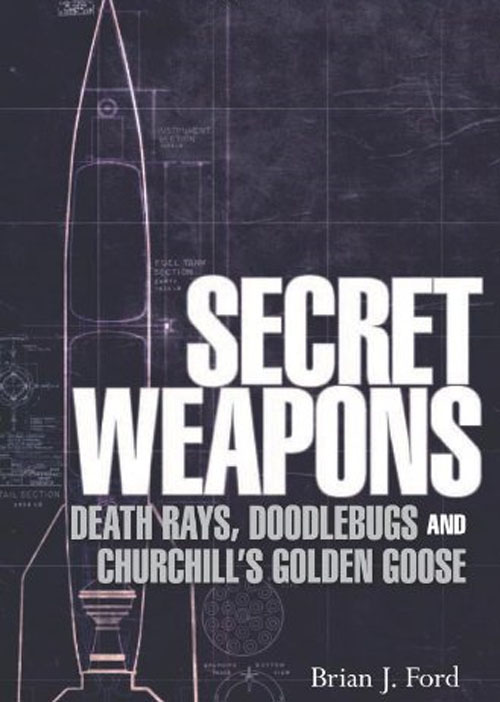Death Rays, Doodlebugs and Churchill's Golden Goose
Review

Secret Weapons - Death Rays, Doodlebugs and Churchill's Golden Goose, Brian J Ford, Osprey Publishing, 2013, 280 p, ISBN 978-1-78096-721-9, £9.99.
In this paperback Professor Ford covers much of the ground of Secret Weapons: Technology, Science and the Race to Win World War II published by Osprey in 2011. As such it is a handy reminder of the revelations about World War Two research and development (R&D) that he has been making for over 40 years. He is a biologist by training and has published widely in his own field but is also known for his radio and television work to popularise science.
In the late 1960s, as the space race was at its height, Ford was given access by Soviet bloc research colleagues to information on the involvement of German WW2 scientists and engineers in the USSR rocket programme. This led him to look into similar involvement at the US space agency, NASA, and he published two books in 1970 showing how the Cold War superpowers had ignored potential involvement in war crimes to recruit as much technological expertise as possible from the defeated Axis nations. This book and its predecessor bring those volumes up to date as more official papers and historical research into the war have become available.
There are two continuing strands in the book: how the victors of WW2 ignored their own war crime procedures in their perceived national interest; and the speed at which R&D moves in war, compared with its pedestrian pace in peacetime. The 1960s space race was an exception but I can testify to the general validity of his proposal, having been involved in R&D at the time of the First Gulf War. Suddenly resources were made available that we had never experienced before and some of the concepts considered were no more bizarre than Brian Ford describes from 50 years earlier.
He is at his vivid best telling the story of the development of aircraft and rocketry by both sides prior to and during WW2 and inevitably most authoritative in his own biological fields, such as gas and germ warfare. The existence of the Ultra programme to decipher Enigma and other codes was not widely known until revealed by Fred Winterbotham in The Ultra Secret in 1974 and was not mentioned in Ford's 1970 books. Sadly its coverage here is scanty and reveals nothing that has not been well documented in the past 40 years. It almost seems like an afterthought to justify the reference in the title to "Churchill's Golden Goose".
This book is very readable and will be a good introduction to those coming fresh to the subject, while perhaps reminding the more experienced of the technological battle 70 years ago that we still benefit from today.

